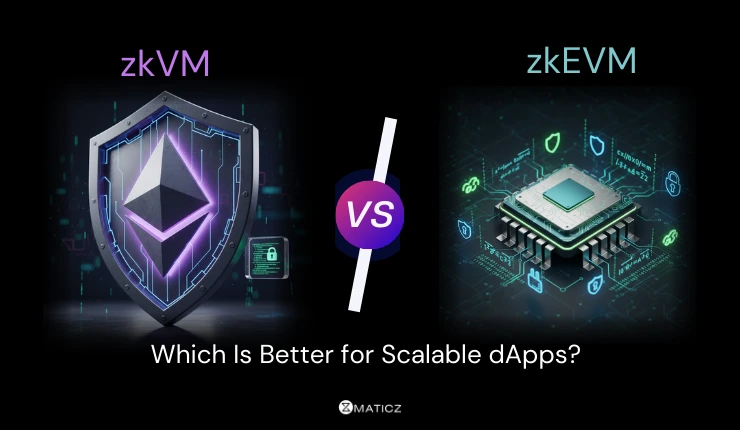Share Posts

How to Effectively Integrate Crypto Payment Gateways into Cryptocurrency Exchanges?
54
1625
103
Crypto exchanges are platforms where one can trade various digital currencies. They act as a bridge, allowing users to convert fiat currencies into cryptocurrencies and vice versa. Without these exchanges, cryptocurrency adoption would be much more challenging, and trading would be nearly impossible for the average person.
But do you know that behind the scenes, there is a complex web of technology, security, and payment systems working to make these transactions smooth and secure? Of them, the most important component that powers the exchange ecosystem is the crypto payment gateway, which can make or break the exchange’s credibility.
So you might be wondering what this all means for you. To run your crypto exchange successfully, it is important to integrate it smartly and efficiently. But how exactly to go about it? In this blog, we will break down exactly how to integrate crypto payment gateways into your exchange. From understanding the technical requirements to ensuring security and user satisfaction, we will walk you through the entire process, step-by-step.
Why Is Integrating Crypto Payment Gateways Important?
Before diving into the integration process of a crypto payment gateway, let’s understand why it is so important and what happens if it is not properly integrated into an exchange.
Crypto payment gateways are what connect users with the exchange’s infrastructure, enabling smooth and instant payments. They allow users to pay in fiat money like USD, INR, etc, and even accept payments from other crypto wallets. If a payment gateway is slow and does not integrate well, it could lead to failed transactions or even lost funds.
But you might ask in which way it will affect your exchange. If users are not able to make payments the way they want, they will quickly lose interest in your platform. Users demand security, speed, and simplicity. If your platform does not deliver on these fronts, they will find one that can. The reputation of your exchange could be at risk. And that’s why integrating crypto payment gateways is not just important, it is essential for the success of your exchange.
Basic Key Requirements to Consider Before Integration
Now that you understand why crypto payment gateways are important for the exchange platform, let’s get into the basic requirements you must have in advance for integration. Before proceeding to the coding section and technical setup, you need to understand what needs to be done to accomplish all this without any hindrance. Below is a step-by-step guide to initiate the process.
1. Technical Expertise
Getting payment gateways integrated is not that easily done with just a few code. It needs strong skills in software development and good knowledge of how blockchain technology, payment systems, and APIs operate.
You will need to understand blockchain protocols, cryptographic security, and API management. If you are not technically sound, you may hire a proper team of qualified developers who would be able to develop the cryptocurrency exchange from scratch and manage the technicalities of merging these systems with your exchange platform.
Cryptocurrency exchange is a platform that handles vast amounts of sensitive information, real cash, and valuable digital assets, and hence is an ideal target for cyberattacks. So there are a few security best practices that you have to adhere to, such as encryption, authentication, security audit, etc.
2. Choosing The Right Payment Gateway
Next, you should choose the right payment gateway for integration. This step is more important as it ensures smooth transactions on your exchange. There are many types of gateways, such as hosted, non-hosted, direct post, and self-hosted.
Hosted - Manages the entire payment process off-site
Non-Hosted or API-Based - Deeply integrates into the exchange with full control over checkout and transaction flow
Direct Post - Sends transaction data directly to the gateway from servers
Self-Hosted - Complete control and customization
Besides this, there are certain other factors that you should look for, which are as follows.
Supported Cryptocurrencies - Look for the payment gateway that supports all cryptocurrencies that your exchange offers. If your platform supports multiple cryptocurrencies but your gateway cannot handle them all, then users may feel restricted and face unnecessary transaction issues. To avoid this, ensure the gateway covers a broad range of coins you plan to offer.
Transaction Fees - Every payment gateway charges a certain amount of fees for deposits, withdrawals, and transactions. If your platform charges high fees, it could push users away. So go for the ones that offer transparent pricing, not hidden fees or high withdrawal costs that could hurt your platform’s reputation.
User Interface - The user interface should be intuitive enough for users to easily handle the payment process, from making deposits to withdrawing funds. Because the more clunky the interface is, the more complicated integration becomes. So select accordingly.
API Access and Documentation - Look for providers that offer detailed information about API’s available endpoints, authentication protocols, parameters, and headers to make the integration process smoother. Basically, an API is a key to connect exchanges with payment gateways.
Let’s explore some of the best options for crypto payment gateways that are commonly used by exchanges.
1. BitPay
2. CoinGate
3. NOWPayments
4. Stripe
5. PayPal
3. Application Programming Interface (API)
Whether it is integrating a payment gateway or anything, the API is what connects your exchange’s backend with the gateway’s platform. When a user buys cryptocurrency on your platform, the payment gateway API soon processes the fiat currency payment and then triggers the wallet API to transfer that particular cryptocurrency to the user’s wallet.
Without APIs, the exchange cannot handle deposits, withdrawals, or even check transaction statuses automatically.
While working with APIs, you will encounter something called API endpoints, which are specific URLs or pathways that allow your platform to interact with various functions of the gateway. So you must know about integrating these endpoints properly.
Steps to Integrate a Payment Gateway in Crypto Exchange
Integrating a crypto payment gateway can seem technical at first, but breaking it down into simple steps makes it much more manageable. Here is how you can go from initial setup to smooth crypto transactions on your exchange platform.
Step 1: Set Up the Gateway Account
To begin with, you need to create an account with the crypto payment gateway provider you have chosen. This just involves signing up on their website, providing basic business and compliance details, and completing the verification process. Based on your region and gateway’s policies, it may take a few hours to days to get approved.
Once your account is approved, the provider will give you access to essential credentials like API keys, secret tokens, and merchant IDs. These credentials are like keys that you use to connect your platform to the gateway. So, store them in a secure location using encrypted environment variables.
Step 2: Integrate the Payment Gateway API
With your account ready, next, you integrate the gateway’s API into the platform’s backend. Using the credentials you got earlier, you need to authenticate API requests and perform actions like generating wallet addresses, initiating transactions, checking status, and confirming payment updates.
If you have RESTful APIs with clear documentation and code samples in multiple programming languages, then you can just proceed with writing backend logic to interact with those endpoints.
For example, when a user deposits Ether, your system should automatically call the gateway API to generate an ETH address and track that transaction until it is confirmed on the blockchain. The backend code you write should be able to detect the payment request.
Step 3: Handle Payments and Withdrawals
Once the API is connected, the platform starts processing payments. When a user initiates a deposit, your backend should detect the payment request, call the gateway to create a wallet address, and track the blockchain for incoming funds. Once the required number of confirmations is received, the system should update the user’s account balance accordingly.
For withdrawals, the system works oppositely. When a user requests to withdraw funds, the platform submits a request to the gateway’s API, which then processes the transaction and sends the crypto to the user’s wallet address. Implement checks for incorrect addresses, low balances, and any suspicious activity.
Step 4: Test the Integration
Before going live, test everything in a sandbox or testnet environment. Most crypto payment gateways offer test modes that you can use to simulate deposits, withdrawals, and failed transactions using dummy coins. This helps catch bugs and check whether the integration works correctly without putting real money at risk.
While testing, try a variety of scenarios like successful payments, failed transactions, delayed confirmations, and edge cases like duplicate requests or timeouts. Fix all issues that arise and make sure the platform notifies users if something goes wrong, like if payments take too long. Once everything is stable, you are ready to launch the payment system.
You May Like to Read: https://maticz.com/how-to-create-a-crypto-payment-gateway
Conclusion
Implementing payment gateways into your exchange may at first seem complicated, but through the proper mindset and a precise step-by-step procedure, it becomes quite easier. Whether you have a decentralized or centralized platform, the solutions you implement will have a direct effect on how your platform will work and gain the trust of its users.
If you are not sure where to begin or require assistance with the technical heavy lifting, Maticz is here for you. With our experience as a top-rated crypto exchange development company, we are experts in creating cryptocurrency exchanges with best-in-class security and performance. Our blockchain team of experts has firsthand experience working with multiple payment gateway APIs, ensuring integrations are done securely and customized to meet the needs of your platform.
We keep abreast of new blockchain trends and compliance regulations so that you can concentrate on diversifying your services while we keep the tech under wraps. Contact Maticz today and let's create a high-performing, future-proof crypto exchange.
Tap Into the Future
The latest insights, posts, and project updates - straight to your inbox.




